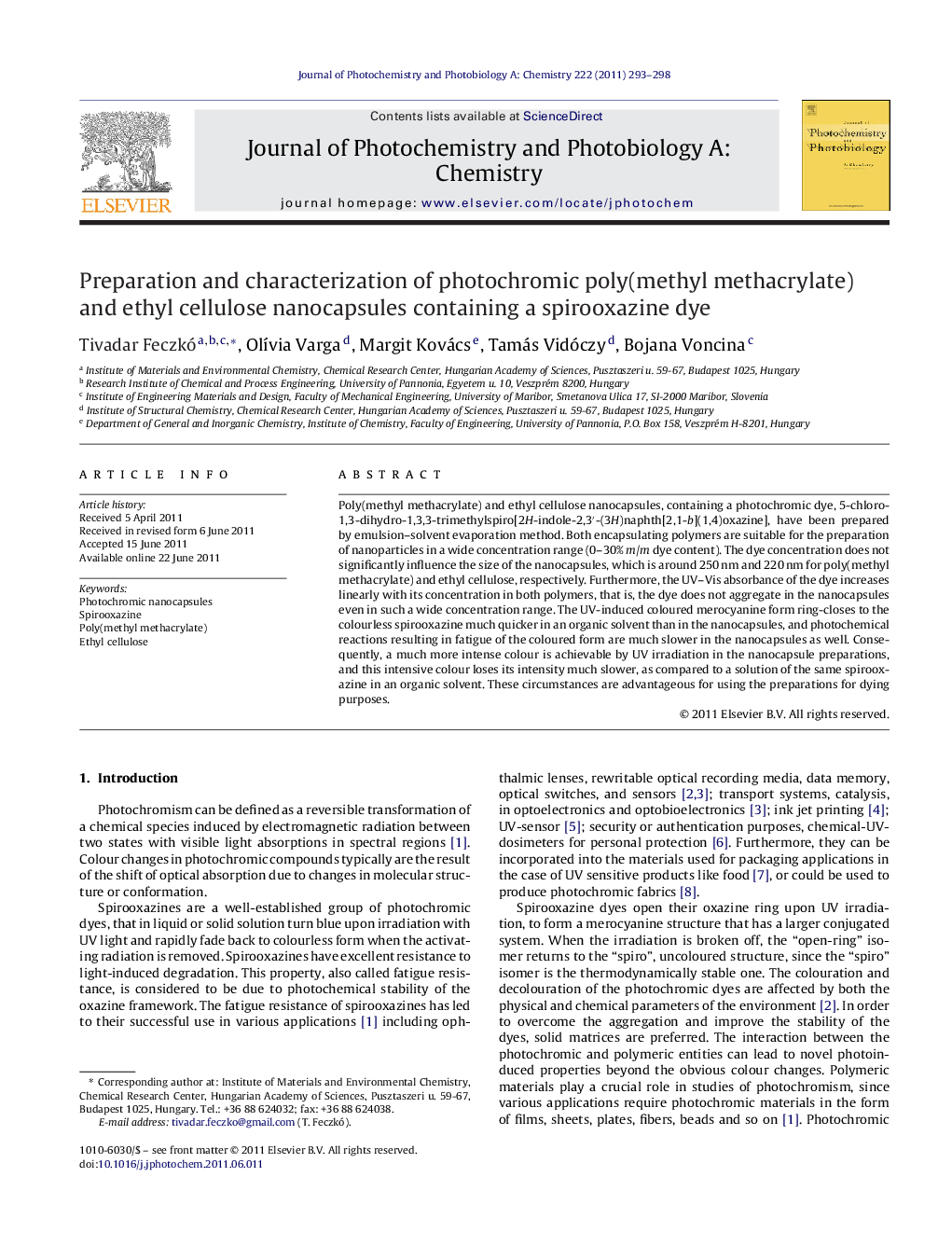| Article ID | Journal | Published Year | Pages | File Type |
|---|---|---|---|---|
| 27395 | Journal of Photochemistry and Photobiology A: Chemistry | 2011 | 6 Pages |
Poly(methyl methacrylate) and ethyl cellulose nanocapsules, containing a photochromic dye, 5-chloro-1,3-dihydro-1,3,3-trimethylspiro[2H-indole-2,3′-(3H)naphth[2,1-b](1,4)oxazine], have been prepared by emulsion–solvent evaporation method. Both encapsulating polymers are suitable for the preparation of nanoparticles in a wide concentration range (0–30% m/m dye content). The dye concentration does not significantly influence the size of the nanocapsules, which is around 250 nm and 220 nm for poly(methyl methacrylate) and ethyl cellulose, respectively. Furthermore, the UV–Vis absorbance of the dye increases linearly with its concentration in both polymers, that is, the dye does not aggregate in the nanocapsules even in such a wide concentration range. The UV-induced coloured merocyanine form ring-closes to the colourless spirooxazine much quicker in an organic solvent than in the nanocapsules, and photochemical reactions resulting in fatigue of the coloured form are much slower in the nanocapsules as well. Consequently, a much more intense colour is achievable by UV irradiation in the nanocapsule preparations, and this intensive colour loses its intensity much slower, as compared to a solution of the same spirooxazine in an organic solvent. These circumstances are advantageous for using the preparations for dying purposes.
• Two types of novel polymeric nanocapsules containing a spirooxazine dye are described. • No aggregation of dye in a concentration range from 0% to 30% (w/w) was observed. • Considerably more intense colour is achievable in the nanocapsules than in solution. • In ethyl cellulose the dye decolourized much faster than in poly(methyl methacrylate). • Fatigue is much slower in poly(methyl methacrylate) – than in ethyl cellulose capsules.
